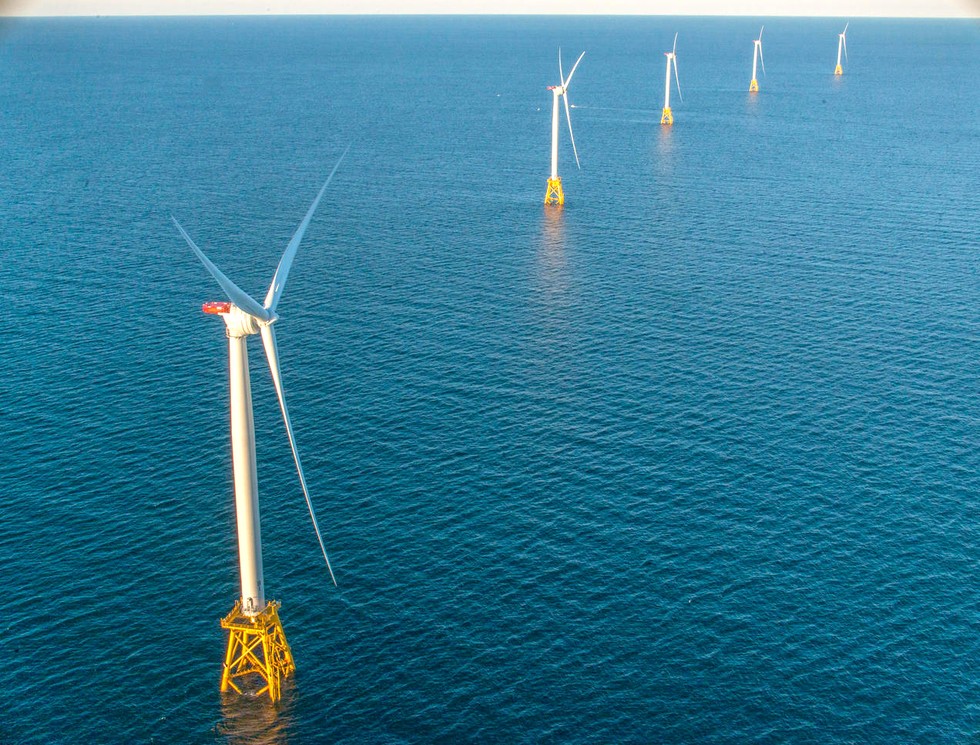Fishery management seems complicated, but it has nothing on offshore wind. The Bureau of Ocean Energy Management, its state-by-state task forces, and each state’s environmental and energy regulators are working simultaneously, yet often with no clear direction, except to build wind farms. It’s challenging, at best, to ensure offshore developments properly account for effects on fishing businesses and communities that depend on sound, science-based management.
While the council process is complex, fishermen have been learning since 1976 how to participate, generally constructively. We don’t have the luxury of decades to learn to deal with offshore wind.
States are adopting lofty near-term offshore wind goals: 1,600 megawatts in Massachusetts, 100 for Rhode Island, 2,400 for New York, and 3,500 for New Jersey, while Maryland and Virginia aim to generate 25 percent and 15 percent of their energy from renewables. The Massachusetts Legislature has been looking to increase the commonwealth’s renewable targets. State-based processes control the energy markets through procurement requirements, tax credits, Coastal Zone Management Act consistency and other efforts. To achieve these goals, the Bureau of Ocean Energy Management is quickly granting huge offshore lease areas with very limited fisheries protections.
Activity isn’t confined to the East Coast. For instance, Gov. Jerry Brown just signed legislation requiring California to run on 50 percent renewables by 2026, and 60 percent by 2030. And the U.S. House Natural Resources Committee unanimously passed a bill to authorize wind development offshore all five U.S. territories.
Amidst this cascade, President Donald Trump signed Executive Order 13807 on Aug. 24, 2017. The order, “Establishing Discipline and Accountability in the Environmental Review and Permitting Process for Infrastructure Projects,” instituted “One Federal Decision,” requiring that “each major infrastructure project… have a lead Federal agency, which shall be responsible for navigating the project through the Federal environmental review and authorization process.” BOEM is the offshore wind lead.
As if BOEM needed more incentive to hurry, the order established tight timelines, including that infrastructure project environmental review take no longer than two years, on average. The order authorizes the Office of Management and Budget to track agency compliance and levy financial penalties against an agency that “significantly fail[s]” to meet applicable timelines.
These expedited timelines greatly limit the ability of BOEM’s sister agencies — most notably NMFS — to conduct necessary research and consultations with regard to fisheries, protected species and habitat. The cumulative effect is there have been essentially no federal — much less state — decisions on how to ensure both renewable energy and sustainable fisheries. This vacuum, in turn, directly contradicts the administration’s June 2018 Executive Order 13840, revising the 2010 National Ocean Policy. That order calls for increasing ocean-related collaboration and modernizing science, while highlighting fisheries’ importance to food security and the national economy.
Individual states, having pushed ahead ambitiously, are now left trying to back-fill fisheries protections into leases that are so far along that developers are already submitting construction and operations plans. The Massachusetts Fisheries Working Group, for example, is struggling to develop transit corridors in the Vineyard Wind site that allow fishermen even to safely access areas outside the wind farm without making the entire project economically unfeasible. New York, for its part, is considering adding preconditions to procurement agreements that require developers to mitigate fisheries impacts. These types of problems could have been addressed far more proactively if fishermen had been allowed a better voice earlier.
While we greatly appreciate states’ efforts to play catch-up, the current context still proves unworkable. The extensive fragmentation of state, federal, regional and independent efforts has led to a head-spinning number of meetings, workshops and comment periods. These are in addition to extensive outreach each developer — both existing and aspirational leaseholders — is conducting. This critical problem, with major science and policy ramifications, is now getting considerable attention, including at the recent American Fisheries Society conference and fishery management meetings.
Given federal fisheries’ regional nature, it’s critical that one decision doesn’t — intentionally or not — morph into divide and conquer. The Responsible Offshore Development Alliance is a newly formed nonprofit whose directors include representatives of all federal fisheries from Maine to North Carolina. The alliance is designed to play a coordinating role, working with federal and state agencies, as well as directly with developers and the scientific community, to help collect, expand and communicate the needed economic and scientific information. Given the magnitude of the challenge, we hope the alliance can gain traction quickly.







